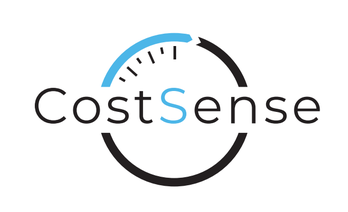In a world where businesses face constant change, making informed decisions is key to growth and success. One of the most powerful tools that companies can leverage to gain a comprehensive understanding of their financial health is the 3-statement financial model.
But what exactly is this model, and how can it benefit your business? Let’s dive in.
What is a 3-Statement Financial Model?
A 3-statement financial model is a sophisticated financial tool that integrates a company’s three core financial statements— the income statement, balance sheet, and cash flow statement—into a single, interconnected framework.
This model enables businesses to understand the impact of their operational activities on their overall financial position and cash flow, offering a comprehensive view of their current and future financial health, and allowing them to see the potential effects of business decisions on their financial outlook.
Components of the 3-Statement Financial Model:
Income Statement: This statement outlines the company’s revenues, costs, and profits over a specific period. It serves as a measure of the company’s operational performance, helping stakeholders assess how efficiently the company is generating profit from its operations.
Balance Sheet: The balance sheet presents a snapshot of the company’s financial position at a given point in time, detailing assets, liabilities, and shareholders’ equity. This statement reveals the company’s financial strength, including its ability to meet short-term obligations and finance its operations.
Cash Flow Statement: The cash flow statement tracks the flow of cash in and out of the business. It categorizes cash flows into operating, investing, and financing activities, providing insights into how well the company manages its cash and liquidity.
How Does the 3-Statement Model Benefit Your Business?
The integration of these three financial statements into a single model offers several key advantages that can significantly benefit your business.
1. Comprehensive Financial Analysis
The 3-statement model provides a complete and interconnected view of your company’s financial health. By linking the income statement, balance sheet, and cash flow statement, you can see the direct impact of operational decisions on your financial position and cash flow. This comprehensive analysis helps in identifying financial strengths and weaknesses, ensuring a more accurate assessment of your company’s performance.
2. Informed Decision-Making
With a 3-statement model, management can simulate different scenarios and assess their impact on the company’s financials. Whether it’s a potential investment, a new product launch, or a restructuring plan, the model allows you to see how each decision will affect your financial statements. This informed decision-making process minimizes risk and maximizes the potential for success.
3. Improved Cash Management
Effective cash management is crucial for any business. The cash flow statement within the 3-statement model provides a detailed view of how cash is generated and used within the company. By understanding your cash flow dynamics, you can ensure that your business maintains sufficient liquidity to meet its obligations and invest in growth opportunities.
4. Strategic Planning Alignment
The 3-statement model is a valuable tool for aligning financial planning with your company’s strategic goals. By projecting future financial performance, the model helps you set realistic targets and allocate resources efficiently. This alignment ensures that your strategic plans are grounded in financial reality, increasing the likelihood of achieving your long-term objectives.
5. Proactive Risk Management
The ability to model different financial scenarios enables proactive risk management. By identifying potential financial risks before they materialize, your business can develop strategies to mitigate these risks, safeguarding your company’s financial stability.
Conclusion
In an increasingly complex business environment, the 3-statement financial model stands out as an indispensable tool for companies looking to enhance their financial decision-making capabilities.
By providing a holistic view of a company’s financial health, improving forecasting accuracy, and supporting informed decision-making, this model empowers businesses to navigate challenges and seize opportunities with confidence.
Whether you’re a startup looking to attract investors or an established company aiming to optimize your operations, integrating a 3-statement financial model into your financial planning process can provide the clarity and insight you need to drive sustainable growth and long-term success.
Case Study: How a 3-Statement Financial Model Benefited XYZ Manufacturing
Background: XYZ Manufacturing, a mid-sized company in the industrial machinery sector, was facing challenges in managing its growth. The company had been expanding rapidly but was struggling with cash flow management, inconsistent financial forecasting, and inefficient resource allocation.
XYZ Manufacturing experienced frequent cash shortfalls, which led to delays in supplier payments and strained relationships with key vendors.
Management realized the need for a more robust financial planning tool to align their operations with long-term strategic goals.
Solution: To address these challenges, XYZ Manufacturing implemented a 3-statement financial model that integrated their income statement, balance sheet, and cash flow statement. The model was customized to reflect the specific dynamics of their industry and business operations.
Benefits:
1. Improved Cash Flow Management:
The 3-statement model provided a clear view of how changes in the company’s operations affected cash flow.
By accurately forecasting cash inflows and outflows, XYZ Manufacturing was able to optimize their working capital, ensuring they had sufficient liquidity to meet obligations and avoid cash shortfalls.
This improved cash management helped the company maintain better relationships with suppliers and secure more favorable payment terms.
2. Accurate Financial Forecasting:
With the integrated model, XYZ Manufacturing could now generate more accurate and realistic financial forecasts.
The model accounted for various scenarios, allowing the company to predict how different factors—such as changes in sales volume or cost structures—would impact their financial statements.
This led to more reliable budgeting and planning, reducing the risk of unexpected financial surprises.
3. Strategic Resource Allocation:
The model enabled the company to identify areas where resources were underutilized or misallocated.
By analyzing the impact of different investment options on their financial statements, XYZ Manufacturing could make more informed decisions about where to allocate capital for the highest returns.
This strategic allocation of resources resulted in higher operational efficiency and improved profitability.
4. Enhanced Decision-Making
The integrated nature of the 3-statement model allowed XYZ Manufacturing’s management team to see the direct impact of their decisions across all aspects of the business.
For example, they could assess how a new product line would affect revenue, capital requirements, and cash flow simultaneously.
This holistic view led to more informed decision-making and better alignment between operational activities and financial goals.
5. Proactive Risk Management:
The 3-statement model allowed XYZ Manufacturing to simulate various economic and operational scenarios, identifying potential risks before they materialized.
By understanding how different risks would impact their financial health, the company could implement strategies to mitigate those risks proactively.
This increased financial resilience, helping XYZ Manufacturing navigate market volatility with greater confidence.
Outcome: Within a year of implementing the 3-statement financial model, XYZ Manufacturing saw significant improvements in their financial performance. Cash flow stabilized, enabling timely supplier payments and reducing the cost of capital. The company’s forecasting accuracy improved by 30%, leading to better budget adherence and more effective strategic planning. Overall, the 3-statement financial model became an essential tool for driving growth and ensuring the company’s long-term success.
Stay proactive. Stay informed. Stay financially healthy.
— Slava

Slava Tkachev, CostSense Owner & CEO
Slava Tkachev is an accomplished CFO & Financial Controller with 15+ years of extensive experience across industries, within both large corporations & small businesses. Slava holds two esteemed accounting designations: Chartered Professional Accountant (CPA) in Ontario & Certified Management Accountant (CMA) in the USA.
Have questions?
Phone: (905) 650 – 3614
Email: [email protected]


